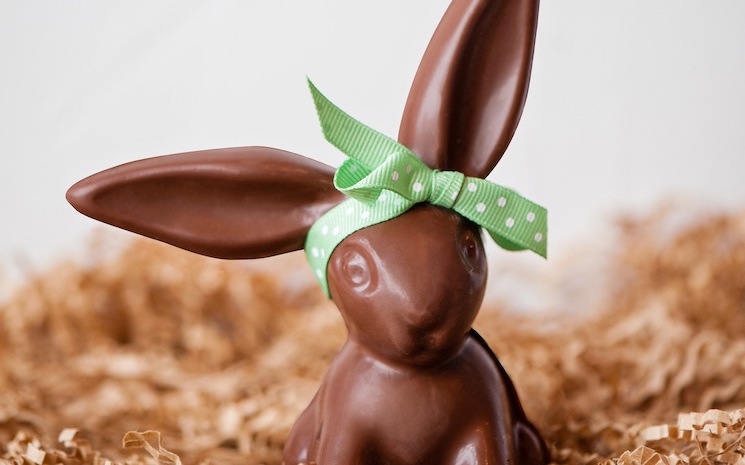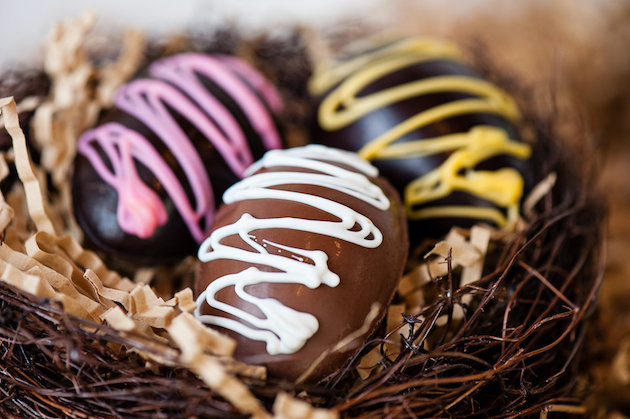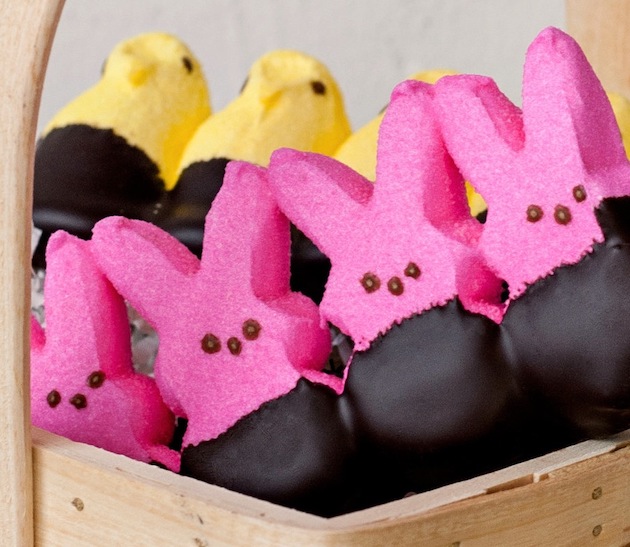
Spring Chocolate Traditions: Easter Bunnies, Eggs, and Passover Matzos
Why does a bunny bring chocolate eggs for Easter? That’s puzzling, isn’t it? Easter, one of the two most important Christian holidays of the year, is observed globally by over 2.3 billion people. Many of these people, along with millions of non-Christians world-wide, will hop to it every spring to fill Easter baskets with chocolate bunnies, marshmallow Peeps, and jellybeans. Matzos don’t usually find their way to Easter baskets, but we’ll talk about those in a minute.
But why a bunny? Why eggs? Where do these traditions come from?
Is the story of the Easter Bunny for kids? Well. . . maybe not completely. The word “Easter,” though debated, probably comes from the Old-English word “Eostre,” the name of the Anglo-Saxon goddess of spring and fertility. And because no other cuddly animal is known for its fertility quite like the rabbit, that may be why the Easter Bunny is who she is today.
The story of the goddess Eostre goes on to include a tale about finding a bird in the snow which she wanted to protect from the cold. Eostre transformed the bird into a rabbit complete with fur as a means to keep it warm. This bunny, only moments ago a bird, still produced eggs, also a representation of fertility.
Where did the Easter basket come from?
The tradition of placing the colorful eggs in a basket may have started with the Lutherans in Germany around 1600. The eggs were place in “nests” made from woven material, such as hats or baskets, and were delivered by the bunny exclusively for good children. That part about the bunny favoring “good children” is as old as parenthood itself. When the Lutherans and other Europeans emigrated to North America, along came the Easter Bunny with them. And so there you have it: a bunny who delivers eggs in a basket each spring for Easter.
The Connection Between Easter and Jewish Passover
Another word meaning “Easter” is the Greek word “Pascha.” (In French, Easter is “Paques.” In Italian, it’s “Pasqua.”) Pascha is also the word for Passover, the Jewish holiday celebrating the Hebrews’ escape from slavery in Egypt. Jesus, at the Last Supper, is at a Seder, the feast celebrating Passover.
The matzos eaten at the Last Supper, a custom laid down in the Old Testament, signifies the unleavened bread the Hebrews ate as they fled Egypt. Matzo is also the unleavened bread Jesus passed around the table, along with the wine, representing his body and blood.
Today, though the connection is often lost between Passover and Easter, we still celebrate Passover with matzos. And just like all things Easter, matzos are made even better when dipped in chocolate.
New Easter Traditions – Peeps!
And how about those marshmallow Peeps that now seem to permeate every holiday on the calendar? They are much newer additions to our Easter baskets. Made first in 1953 in Bethlehem, Pennsylvania, they now come in more than a dozen flavors, including fruit punch and sour watermelon. We at Dean’s Sweets are traditionalists, however, dipping only the original yellow chicks as well as the irresistible pink bunny Peep.
From the Old City of Jerusalem to new innovations in Bethlehem, PA, Easter and Passover rituals remain steeped in tradition while they gently evolve to include new customs. The Easter Bunny still makes her deliveries, and spring still arrives with sheep in the fields. Happy Easter and happy Pesach! Let’s all celebrate together and in our own ways, and of course, don’t forget the chocolate!


